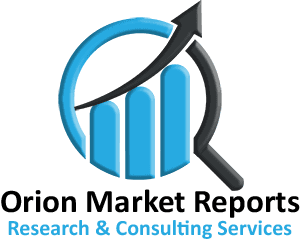Global Automotive Aluminum Alloy Wheels Market 2022 Driving Factors Forecast Research 2028
The global automotive aluminum alloy wheels market is anticipated to grow at a CAGR of 9.3% during the forecast period (2022-2028). Increased vehicle production and rising demand for lightweight automobile wheels as a result of increased fuel efficiency rules across the globe are the primary growth drivers for this market. Automotive aluminum alloy wheels are lightweight aluminum alloy wheels with a superior weight-to-strength ratio. These wheels are suited for heavy-duty applications like off-road driving or racing, where the wheel is subjected to significant strains.
As automotive manufacturers focus on reducing vehicle weight to achieve increased fuel efficiency, the use of forged aluminum-alloy wheels in passenger vehicles has become a trend. Forging It entails heating metal alloys to extremely high temperatures, allowing them to be molded and formed under high pressure and impact resistant conditions without distortion of shape or size. The forging technique increases the alloy’s tensile strength while lowering its weight. Replacing components with lighter alternatives such as forged aluminium alloy wheels is one way that automakers can reduce vehicle weight without sacrificing performance.
Vehicle manufacturers have focused their emphasis to safe, luxury, and lightweight solutions in response to consumer demand. Lightweight materials and quality interiors are critical variables in delivering some of the industry’s most exciting potential. This means that suppliers will need to create solutions that assist OEMs to comply with ever-tightening standards while still catering to a wider range of consumer preferences.
According to the US Department of Energy, a 10% reduction in vehicle weight might result in a 6% to 8% increase in fuel economy. By replacing cast iron and steel components with lightweight alloys such as magnesium alloys, aluminium alloys, high-strength steel, and carbon fiber, the weight of a vehicle’s body can be reduced by 50%. This lowers the vehicle’s fuel usage directly. Moreover, as per the same source, stated that replacing one-quarter of the country’s fleet with lightweight components and high-efficiency engines may save more than 5 billion gallons of fuel annually by 2030. As a result, during the forecast period, increased demand for lightweight cars and an increase in the rate of vehicle manufacturers are expected to drive this market forward.
Various initiatives taken by the companies in the market are boosting the market growth. For instance, in December 2020, The Ronal group unveiled the new Ronal R70-blue, the world’s first carbon-neutral recycled wheel. The wheel is built primarily of pre-and post-consumer materials, as well as primary aluminium that is 100% recyclable and derived from renewable energy sources.
Market Coverage
- The market number available for – 2021-2028
- Base year- 2021
- Forecast period- 2022-2028
- Segment Covered-
- By Type
- By Application
- Regions Covered-
- North America
- Europe
- Asia-Pacific
- Rest of the World
- Competitive Landscape- BORBET GmbH, CITIC Dicastal, IOCHPE, RONAL GROUP, Superior Industries, Inc., among others.
Key questions addressed by the report
- What is the market growth rate?
- Which segment and region dominate the market in the base year?
- Which segment and region will project the fastest growth in the market?
- How has COVID-19 impacted the market?
- Deviation from the pre-COVID-19 forecast
- Most affected region and segment
- Who is the leader in the market?
- How players are addressing challenges to sustain growth?
- Where is the investment opportunity?
Global Automotive Aluminium Alloy Wheels Market Report by Segment
By Type
- Casting
- Forging
- Others
By Application
- Passenger Vehicle
- Commercial Vehicle
The report will be delivered within 48-72 hours after payment confirmation
